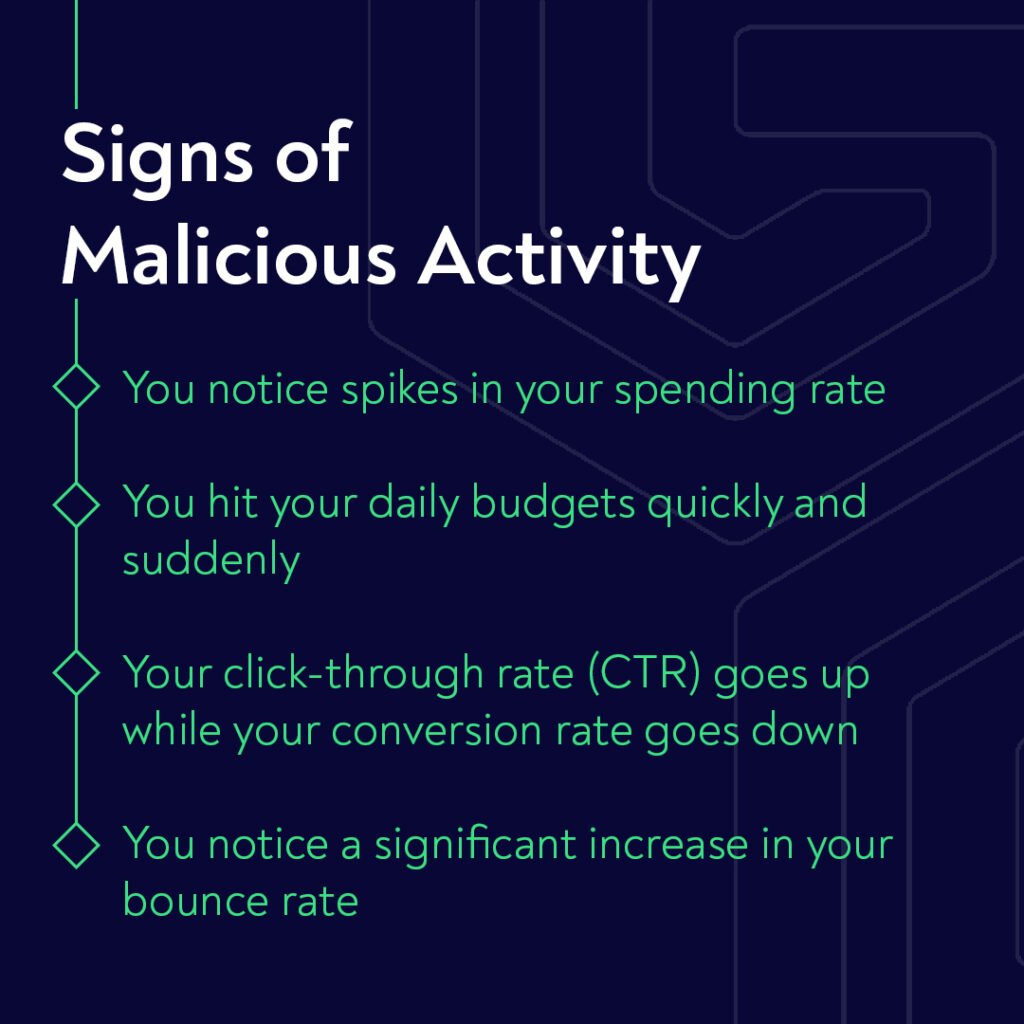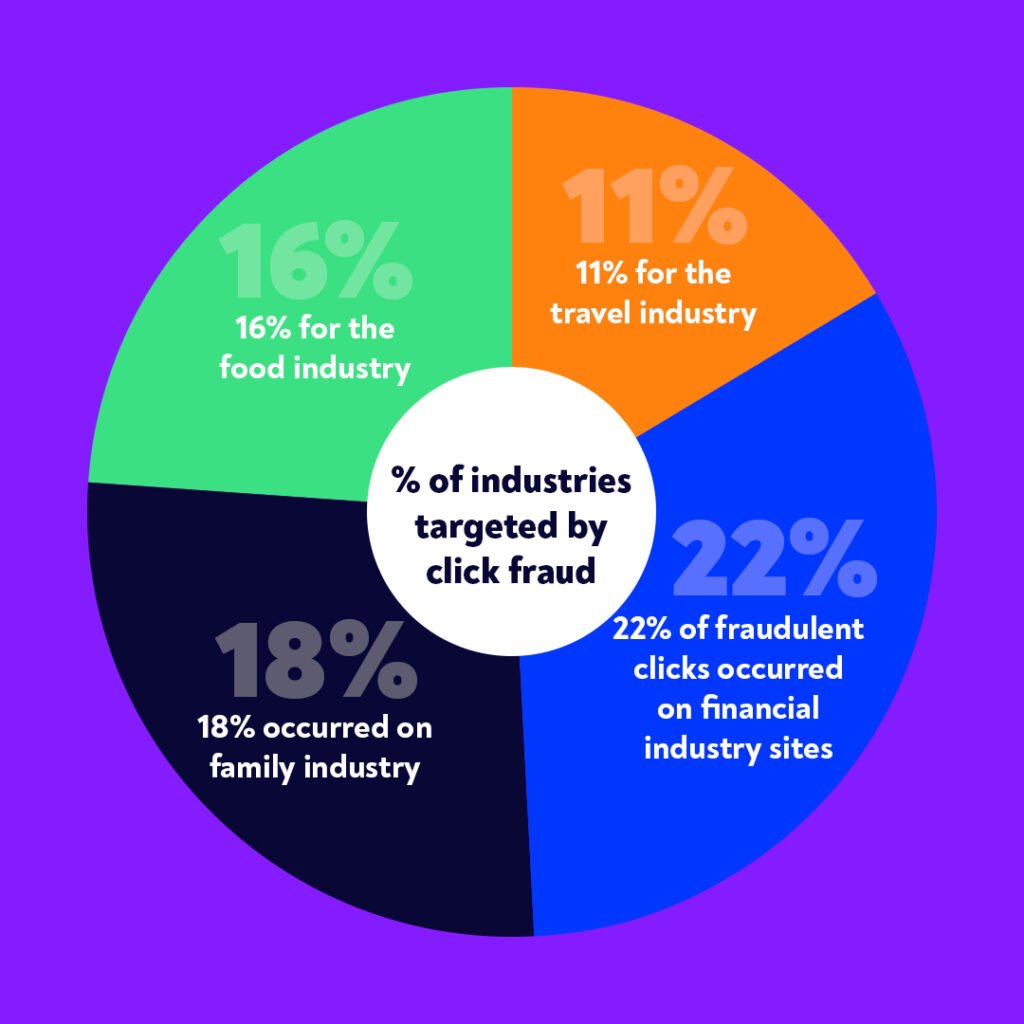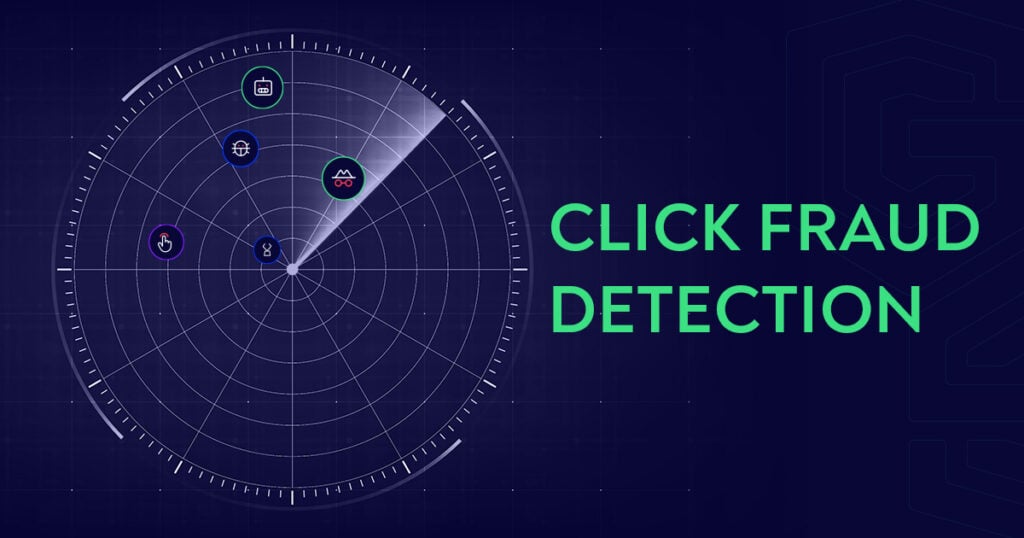Click fraud is a severe problem for online marketers, costing the industry billions of dollars yearly. That’s why click fraud detection is essential to prevent fraudulent clicks from depleting ad budgets and hindering business growth.
Understandably, most marketers are afraid of losing real customers in the process of eliminating click fraud. ClickGUARD has helped businesses eliminate click fraud without restricting real customers from engaging with ads.
This article will explain how click fraud works and how ClickGUARD’s click fraud detection solution can help protect your ad budget and grow your business.
What is click fraud detection?
People often mistake click fraud for invalid clicks, even though they are entirely different. Google’s system groups invalid and fraudulent clicks. However, invalid clicks are accidental. It can occur when someone unintentionally double-clicks an ad or taps it while scrolling on a mobile device. On the other hand, fraudulent clicks have malicious intent to waste your ad spend.
ClickGUARD’s click fraud detection algorithm detects and prevents non-converting ad clicks, saving your advertising budget. Click fraud detection works by monitoring the clicks on ads and flagging suspicious activity, such as multiple clicks from a single IP address or large amounts of traffic coming from specific geographic regions; enabling you to identify potential risks to your business.

Lookout for these common indicators of click fraud
Attackers have found new ways to manipulate clicks for their gain. So, what are the most common indicators of click fraud?
- High click volume: One of the first indicators of click fraud is an unusually high number of clicks on your ads. This can signify click farms, where people are paid to click on ads to waste the advertiser’s budget.
- Low conversion rate: If the click rate is significantly higher than the conversion rate, it could mean someone is frustrating your efforts by clicking on ads without actually buying anything.
- Geographic anomalies: Another sign of click fraud is when clicks come from areas that don’t make sense for your product or service. For example, if you’re selling pet food in the US and see a lot of clicks from places like Greenland or Mongolia, that could be a red flag.
- IP address patterns: If you’re seeing clicks coming from the same IP address or set of IP addresses, this could indicate that the same person or entity is responsible for the clicks.
Types of click fraud
Competitors sometimes resort to click fraud to undermine your advertising. Click fraud is split into two main types:
- Manual, where people repeatedly click on your ads.
- Automatic, where bots search and click on your ads based on their programming.
Manual click fraud
Manual click fraud is when a person repeatedly clicks on your ads to waste your advertising budget. It can be carried out in two ways:
Small-scale attacks
A small-scale attack can be a competitor telling its employees to go out and click on all your ads. Angered or disgruntled employees can do similar things. Fortunately, small-scale attacks are either unlikely or easily caught. Small-scale click fraud can be detected by monitoring traffic and analyzing user behavior. Better still, you can automate the process with a click fraud detection tool.
Large-scale, organized attacks
While small-scale attacks are easy to tackle, click farms provide click fraud-as-a-service offerings. They mostly hire low-wage workers to sit at a computer and click on ads or generate fake likes and followers on social media all day.
They’re far less cost-effective than bots since human labor is more expensive and slower. Manual large-scale click farms are much more difficult to track because they have fewer tell-tale signs of fraudulent clicks.
Automatic click fraud
Automatic click fraud uses bots to crowd your ad traffic. It’s a more organized and scalable means of conducting click fraud. One thing that makes them obvious is where they are and how they interact with your sites. But, these bots can simulate human-like activity, such as clicking on ads, scrolling through web pages, and even mimicking mouse movements. This makes it difficult to differentiate between genuine clicks from real users and fraudulent clicks from bots. Click fraud detection tools can help identify and block this malicious activity by accurately analyzing click patterns and other relevant data to distinguish fraudulent traffic from legitimate traffic.
Top 5 myths about click fraud detection
Despite the growing prevalence of click fraud, it’s still outside mainstream public perception. That’s not to say that people aren’t aware of it. In 2021, a man was sentenced to 10 years in prison for stealing $7 million from advertisers through digital advertising fraud. Click fraud happens frequently as malicious individuals carry out attacks to undermine advertisers’ efforts.
There have been a few misconceptions about click fraud; the common ones include the following:
Myth 1: Click fraud isn’t a huge problem and won’t affect me
Unfortunately, click fraud is far more widespread than many people realize. Bots and click farms have increased their sophisticated techniques, making it increasingly difficult to track manually.
Myth 2: Google Ads is effective at stopping fraudulent clicks
Google’s preventative measures often flag real people and potential customers as suspicious. Google also deals with clicks retroactively and promises to refund your ad spend, which rarely happens.
Myth 3: You can block click fraud yourself using simple methods
Small-scale fixes, such as implementing basic click fraud prevention measures, can help minimize the impact of click fraud. However, these fixes may lead to false positives, where legitimate customers are flagged and blocked from accessing your website. This might cause you to lose money and your potential customers’ trust. Moreover, focusing on detecting click fraud yourself can detract from other important tasks for your business.
Myth 4: Your ad campaign is too small to be hurt by click fraud
You can be targeted by click fraud regardless of the size of your ad campaign. Many botnets target specific industries to suppress competition. If you’re in the finance, family, food, or service industries, which are notably competitive, you’re more at risk.

Bots can target any company based on their services without being the specific target of an attack campaign.
Myth 5: Protective software isn’t worth the expense
Investing in protective software might seem like an added expense, but it will be cost-effective in the short and long term. Click fraud drains your advertising budget through invalid clicks, which leads to inflated click-through rates, reduced ad visibility, and low return on investment. By implementing protective software, you can proactively detect and prevent click fraud, saving you money upfront.
Also, protective software provides accurate and detailed information to make informed decisions to scale your marketing. By identifying patterns in user behavior and click data, protective software can help you refine your ad targeting, resulting in better engagement and more revenue.
ClickGUARD is much more than protective software. We can improve your ad spend strategies, enabling a higher return on your investment by ensuring higher quality traffic to your site.
How click fraud detection and protection works
Click fraud detection and protection works by combining machine learning algorithms. ClickGUARD collects advanced information to determine more accurately which clicks are legitimate. Our system identifies patterns in the data collected, such as high click volume, low conversion rates, geographic anomalies, or IP address patterns.
You can customize the level of protection you prefer and decide who can view your campaigns. These protection settings enable you to classify click fraud and invalid clicks with parameters like proxy/VPN traffic, bad website interaction, numerous targeting by a single visitor, and traffic from the IP range. By leveraging these customizable features, you can more accurately detect and prevent click fraud and protect your advertising investments from potential harm.
Protect your business from click fraud
Click fraud detection is an increasingly important investment to secure your ads and ensure you have more optimized website traffic.
ClickGUARD saves your business from wasting money on fraudulent clicks. Our solution automatically analyzes consumers’ click behavior to determine and track fraudulent clicks in real-time. With just a few taps, we take the burden off your desk so you can focus more on what matters in your business. Why not protect your ROAS today? Start your free trial now.
FAQs
How do you detect click fraud?
Google Ads has put in place precautions that supposedly help protect marketers against invalid clicks and other forms of click fraud. However, significant incidences of fraudulent clicks have made marketers lose money.
ClickGUARD eliminates fraudulent ad activities so that you can save your budget for your actual audience.
How do you detect click fraud in Google Ads (Adwords)?
Google Ads has put in place precautions that supposedly help protect marketers against invalid clicks and other forms of click fraud. However, significant incidences of fraudulent clicks have made marketers lose money.
ClickGUARD eliminates fraudulent ad activities so that you can save your budget for your actual audience.
How to detect click fraud in Google Analytics
Google Analytics contains several features that can help you detect click fraud. You can monitor fraudulent clicks through the “Behavior,” “Real-time,” and “Location” reports on Google Analytics. However, these features don’t protect you from click fraud.
ClickGUARD detects and protects your advertising from wasteful clicks based on advanced learning.



